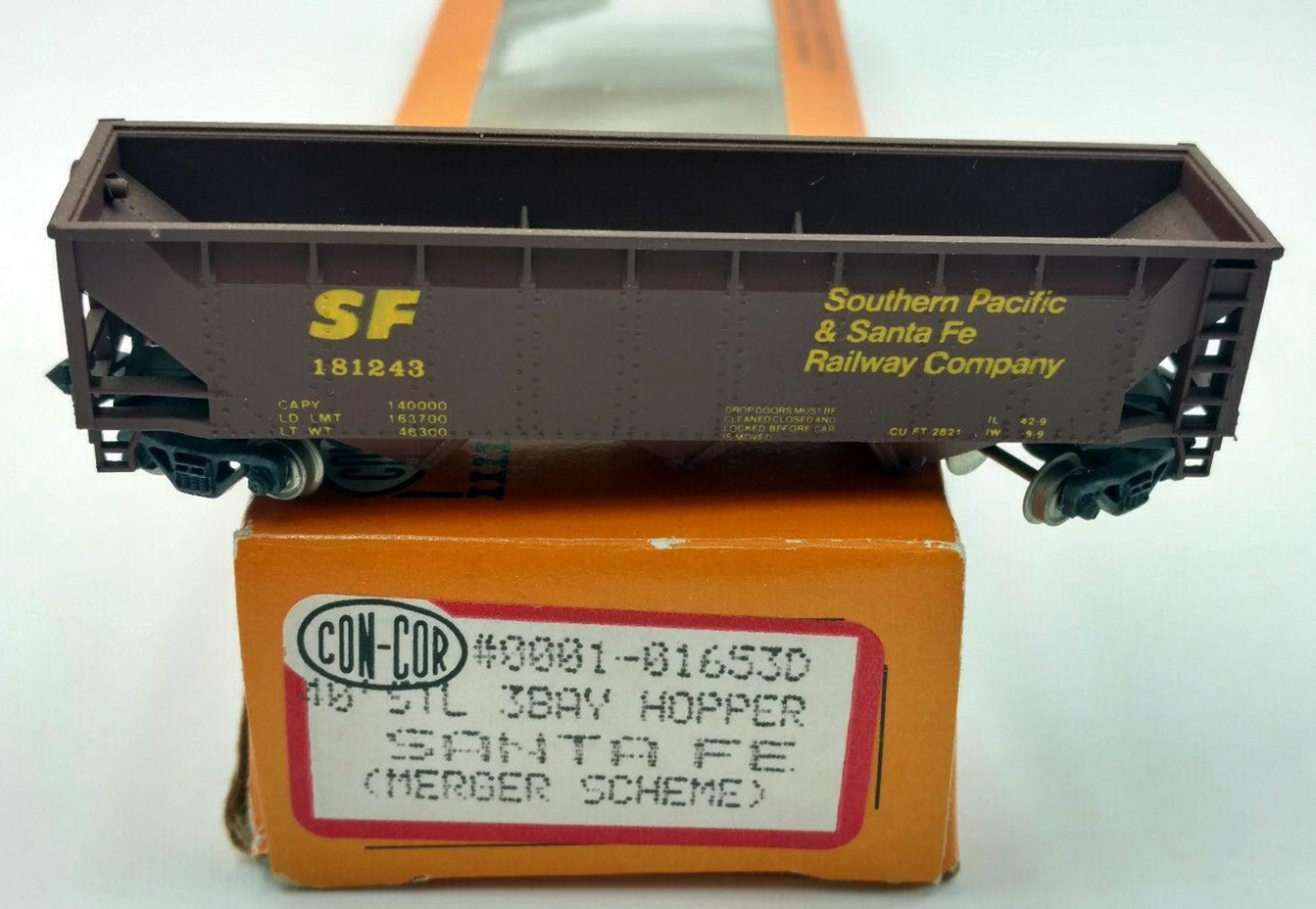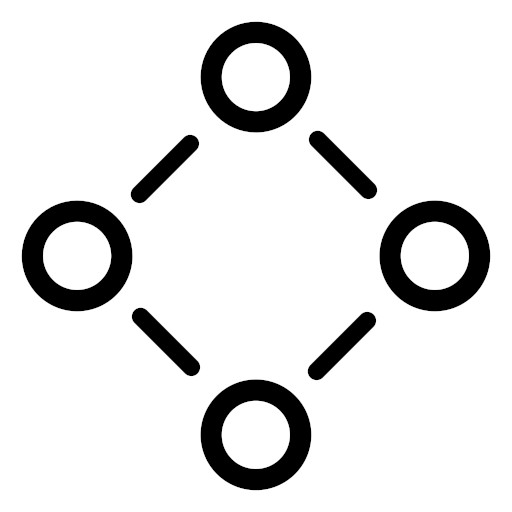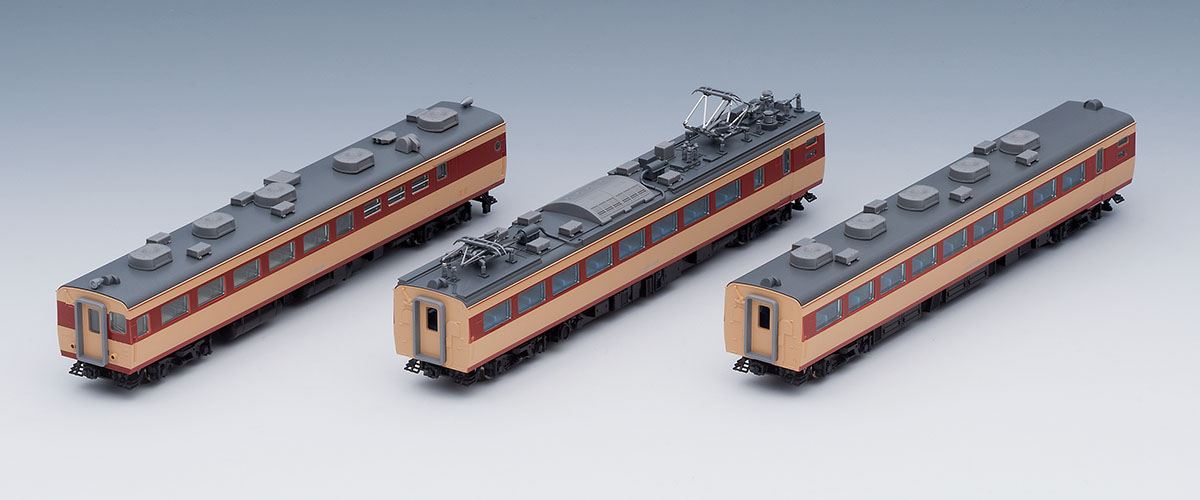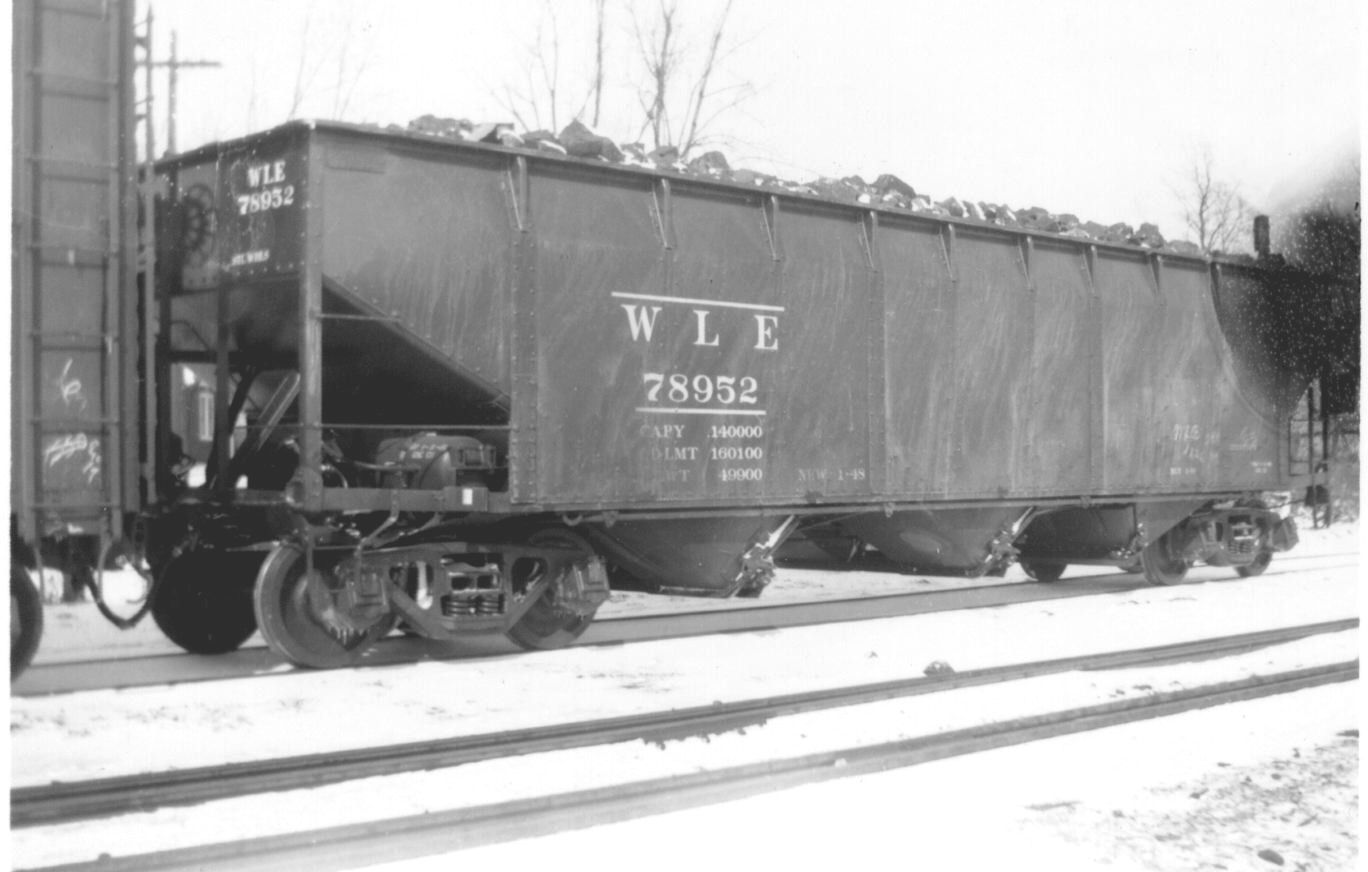Model Information: This is an early Con-Cor body style. It was produced in Con-Cor's Chicago facility. It models a generic "steel" offset-side hopper, clearly demonstrating rivets.
Prototype History: The 1960s brought about a growth in car size (and capacity). Railroads that transported coal moved away from the older 2-bay 55-ton USRA standard to newer 90- and 100-ton three bay hoppers. These cars were effective and long-lived. Many railroads swapped out the trucks on these cars to increase the capacity to 100 tons. Many companies produced these, including Pullman, Bethlehem, Evans, Greenville, Trinity and Ortner. The offset side variant of these hoppers carried a little more capacity than their rib-sided cousins.
Road Name History: 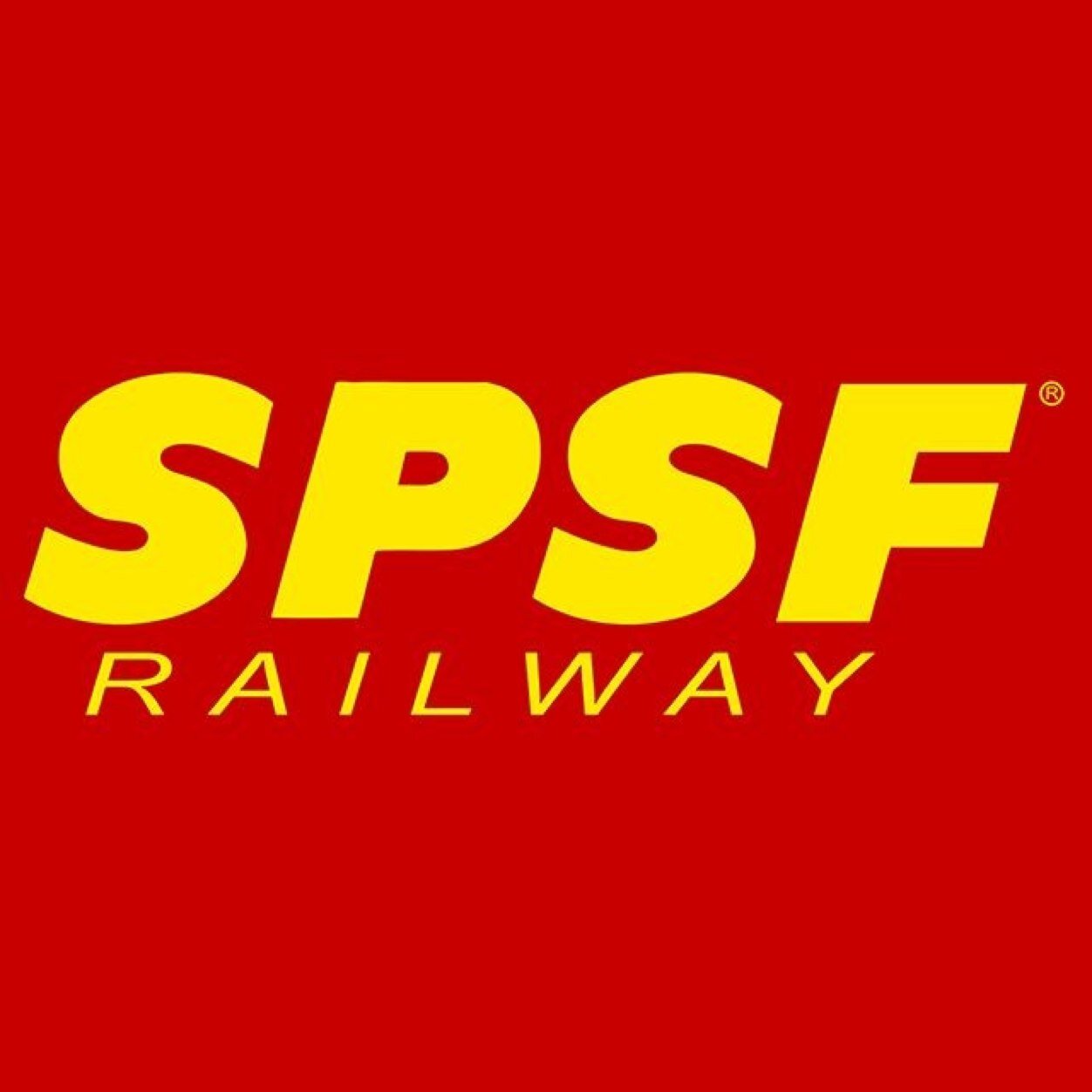 In the 1980s, The Atchison, Topeka and Santa Fe Railway (SF) and Southern Pacific Transportation Company (SP) attempted a merger. It began with the merger of holding companies Santa Fe Industries and the second incarnation of the Southern Pacific Company on December 23, 1983 to form the Santa Fe Southern Pacific Corporation (SFSP), which held the SP shares in a voting trust. After the Interstate Commerce Commission denied the merger, SFSP sold the SP to Rio Grande Industries on October 13, 1988, and was renamed Santa Fe Pacific Corporation on April 25, 1989.
In the 1980s, The Atchison, Topeka and Santa Fe Railway (SF) and Southern Pacific Transportation Company (SP) attempted a merger. It began with the merger of holding companies Santa Fe Industries and the second incarnation of the Southern Pacific Company on December 23, 1983 to form the Santa Fe Southern Pacific Corporation (SFSP), which held the SP shares in a voting trust. After the Interstate Commerce Commission denied the merger, SFSP sold the SP to Rio Grande Industries on October 13, 1988, and was renamed Santa Fe Pacific Corporation on April 25, 1989.
The merger was opposed by the Justice Department in 1985 and denied in a 4–1 vote by the Interstate Commerce Commission (ICC) on July 24, 1986, who ruled that such a merger included too many duplicate routes and was therefore monopolistic. The Commission denied SFSP's appeal (again in a 4–1 vote) on June 30, 1987.
The holding company, ordered to operate the Southern Pacific at arm's length until it sold it, disposed of it on October 13, 1988 to Rio Grande Industries for $1.02 billion and the assumption of SP's debt, which consolidated the SP with its Denver and Rio Grande Western railroad under the Southern Pacific name. The holding company retained all the non-rail interests of both predecessors and shortened its name to Santa Fe Pacific Corporation (though all of the California real estate holdings were consolidated in a new company, Catellus Development Corporation, becoming the State's largest private land owner. Catellus subsequently purchased the Union Pacific Railroad's interest in the Los Angeles Union Passenger Terminal).
In 1995, the Santa Fe railroad merged with the Burlington Northern Railroad to form the Burlington Northern and Santa Fe Railway (BNSF), and the SP was bought out by the Union Pacific Corporation the following year.
From Wikipedia

The merger was opposed by the Justice Department in 1985 and denied in a 4–1 vote by the Interstate Commerce Commission (ICC) on July 24, 1986, who ruled that such a merger included too many duplicate routes and was therefore monopolistic. The Commission denied SFSP's appeal (again in a 4–1 vote) on June 30, 1987.
The holding company, ordered to operate the Southern Pacific at arm's length until it sold it, disposed of it on October 13, 1988 to Rio Grande Industries for $1.02 billion and the assumption of SP's debt, which consolidated the SP with its Denver and Rio Grande Western railroad under the Southern Pacific name. The holding company retained all the non-rail interests of both predecessors and shortened its name to Santa Fe Pacific Corporation (though all of the California real estate holdings were consolidated in a new company, Catellus Development Corporation, becoming the State's largest private land owner. Catellus subsequently purchased the Union Pacific Railroad's interest in the Los Angeles Union Passenger Terminal).
In 1995, the Santa Fe railroad merged with the Burlington Northern Railroad to form the Burlington Northern and Santa Fe Railway (BNSF), and the SP was bought out by the Union Pacific Corporation the following year.
From Wikipedia
Brand/Importer Information: Con-Cor has been in business since 1962. Many things have changed over time as originally they were a complete manufacturing operation in the USA and at one time had upwards of 45 employees. They not only designed the models,but they also built their own molds, did injection molding, painting, printing and packaging on their models.
Currently, most of their manufacturing has been moved overseas and now they import 90% of their products as totally finished goods, or in finished components. They only do some incidental manufacturing today within the USA.
Important Note: The Con-Cor product numbering can be very confusing. Please see here in the article how to properly enter Con-Cor stock numbers in the TroveStar database.
Currently, most of their manufacturing has been moved overseas and now they import 90% of their products as totally finished goods, or in finished components. They only do some incidental manufacturing today within the USA.
Important Note: The Con-Cor product numbering can be very confusing. Please see here in the article how to properly enter Con-Cor stock numbers in the TroveStar database.
Item created by: gdm on 2018-02-28 10:57:04
Last edited by: Alain LM on 2024-11-14 12:04:40
If you see errors or missing data in this entry, please feel free to log in and edit it. Anyone with a Gmail account can log in instantly.
Last edited by: Alain LM on 2024-11-14 12:04:40
If you see errors or missing data in this entry, please feel free to log in and edit it. Anyone with a Gmail account can log in instantly.



